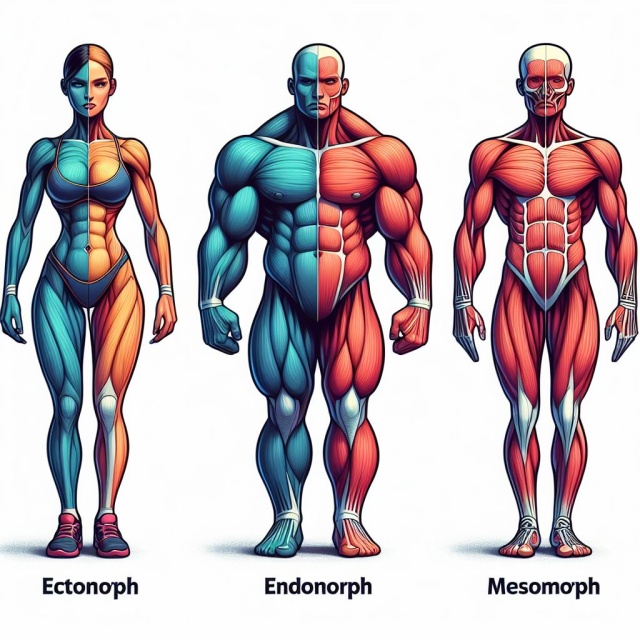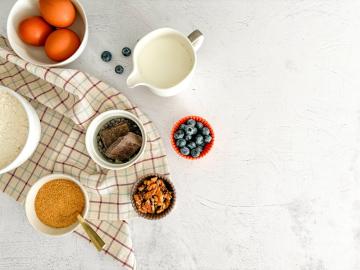The human body, a masterpiece of nature, manifests itself in a surprising diversity of shapes, sizes and structures. Each individual is unique, with a body type that is determined by a complex interaction between genetics, environment and lifestyle. However, in a society that often glorifies a stereotypical and unrealistic ideal of beauty, it is essential to recognize and celebrate the diversity of bodies that exist in the world. In this article, we will explore in depth the different body types, from the endomorph to the ectomorph, and discuss the importance of self-acceptance in promoting health and emotional well-being.
The Beauty of Body Diversity.
The human body is a constantly evolving work of art, a physical expression of our individuality and uniqueness. From endomorphs with their rounded, curvy shapes to ectomorphs with their slender, slim contours, each body type has its own intrinsic beauty and dignity. However, in a society that often promotes a stereotypical and unrealistic ideal of beauty, it is easy to fall into the trap of comparison and self-criticism.
Going deeper into body types.
Endomorph:
The endomorph is characterized by having a larger bone structure and a higher percentage of body fat compared to other body types. These people usually have a fat distribution that tends to be concentrated in the abdomen, hips and thighs. Endomorphs often have a more rounded and curvy appearance, which can make it more difficult to achieve certain beauty standards that favor thinness.
Mesomorph:
The mesomorph has a medium bone structure and a good amount of muscle mass. These people usually have broad shoulders, a narrow waist, and an athletic, well-proportioned figure. Mesomorphs are naturally muscular and have a tendency to gain muscle relatively easily. They are often considered genetically blessed for physical development and can excel in sports that require strength and endurance.
Ectomorph:
The ectomorph is characterized by having a thin bone structure and a lower percentage of body fat. These people usually have long, thin limbs, as well as a generally thin and slender appearance. Ectomorphs tend to have difficulty gaining weight and muscle, and often have a fast metabolism. Although they may be envied for their natural thinness, they may also face challenges, such as difficulty gaining weight and increased susceptibility to injury in contact sports due to their thinness.
Apple body type:
The Apple body type is characterized by having a fat distribution that is mainly concentrated in the abdomen area. People with this body type often have wide, rounded waists, with little muscle development in the arms and legs. This body type is associated with a higher risk of obesity-related diseases such as type 2 diabetes and heart disease, since abdominal fat may be more harmful to health than fat in other parts of the body.
Pear Body Type:
The Pear body type is characterized by having a fat distribution that is mainly concentrated in the hips, thighs and buttocks. People with this body type typically have narrow waists and small busts compared to their wider hips and thighs. Although this body type may have a lower risk of obesity-related diseases such as type 2 diabetes, there may be aesthetic concerns associated with the body shape, as some people may feel uncomfortable with their wider hips.
Celebrating body diversity.
It is essential to recognize and celebrate the diversity of bodies that exist in the world. Each body type has its own advantages and challenges, and all deserve to be valued and respected. Instead of comparing ourselves to the unrealistic beauty standards promoted by the media, it is important to learn to love and accept our own body as it is. By doing so, we can cultivate greater self-esteem, confidence, and emotional well-being in our lives.
The importance of self-acceptance.
Self-acceptance is essential for health and emotional well-being. Learning to love and accept our body as it is allows us to live a full and authentic life, free of the pressure and anxiety associated with the pursuit of physical perfection. In a society that often promotes unrealistic beauty standards, it can be difficult for some people to accept and love their bodies just the way they are. However, by challenging these norms and embracing the diversity of bodies that exist in the world, we can cultivate greater self-esteem and greater satisfaction with ourselves.
All body types are beautiful and worthy of celebration. By learning to love and accept our own bodies, we can free ourselves from the pressure of meeting unrealistic standards of beauty and cultivate greater self-esteem and self-confidence. By celebrating the diversity of bodies that exist in the world, we can promote a culture of acceptance, inclusion and mutual respect that enriches our lives and strengthens our community.






